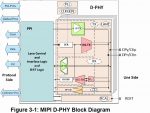- Is ASML first clandestine shot in US war on China chips?
- Will the action extend further to other chip equip cos?
- China chip cold conflict warming up?
It would appear from a Reuters report yesterday that a behind the scenes “cold war” between the US and China in the chip business has just been exposed and has the potential to warm up a bit to include not just the Dutch company, ASML, but other US based companies.
Reuters has publicly confirmed what had been rumored in the industry that ASML was not going to export an EUV tool ordered by SMIC (of China) almost 2 years ago.
More importantly it is clear that the action is the result of direct US government pressure to deny the semiconductor equipment to China in the name of international security
One tool doesn’t matter but is this the tip of the iceberg?
One EUV scanner doesn’t really matter much in the larger scheme of the semiconductor industry. It hardly matters to ASML as there are more than enough takers for the tool if it doesn’t ship to China and in fact may have already been shipped out to another customer…so the near term impact on ASML is essentially near zero.
The question is the longer term impact.
Will US companies be next to be pressured to stop exporting leading edge equipment….will the pressure increase to AMAT, KLAC & LRCX?
What is the longer term impact for ASML? Will they never be allowed to ship and EUV tool to China? China will likely become the largest single market for semiconductor equipment and for some companies it is already their biggest customer.
Going back to a cold war footing?
For many years US semiconductor equipment exports to China were highly limited to products at least two generations behind the leading edge and export licenses were tightly controlled. While export license requirements still exist, their approval has been more of a rubber stamp over the last several years as trade with China has become a huge part of the industry.
All it would take would be an enforcement of existing rules to stem the flow of equipment thus cutting off the oxygen that China’s Chip industry desperately needs
We predicted this exact scenario of ASML, SMIC & China in May of 2018
We have been warning about the problems between the US and China in chips for several years now, well before anyone else woke up to the issue.
In fact we predicted that ASML’s EUV tool would become the pawn in the US/China chip conflict in a note we sent out in May of 2018.
We think it is worth your while to re-read this note we published in May 2018 as it describes the then current circumstances that we suggested would lead to the blockage of an EUV tool.
Please click the link below:
China Semiconductor Equipment China Sales at Risk
We laid out the exact scenario we have now experienced. ASML is the perfect pawn as it is not a US company and not seen as a “direct” US action. It also limits fallout in the US as no US company is directly impacted.
Now that the subterfuge has been exposed, whats next?
China was not likely naive enough to believe that the Dutch government acted on its own and likely was aware of the clandestine activities being waged against them.
This likely will impact current ongoing agreements and negotiations between China and the US and will not make things any easier.
China will likely “triple down” on efforts to develop internal independent chip manufacturing capability.
Since there is truly no alternative to the 100% lock that ASML has on the market, China will likely wage a huge pressure war on the Dutch to release the tool and allow further sales
Will the embargo spread?
While an EUV is clearly the linchpin and central tool of any advanced fab there are still a lot of other tools needed to enable to overall process. Deposition, etch, metrology, inspection etc;.
The US government could very easily start to slow down or curtail export licenses, as it did in the past, and slowly starve the Chinese chip industry of the infrastructure it imports. For all we know this could already be in the works.
Its difficult to tell the Dutch not to ship equipment to China while US companies are still sending boat loads of equipment there.
It would be only logical for the US to take a closer look at export licenses granted to US companies if only to share the pain with the Dutch and do our part of keeping China at bay.
Who’s exposed and “at risk” of a spreading embargo?
Likely at the top of our list is KLAC. China represents not just KLAC” s biggest customer (taken together) but also the fastest growing region (others have been in longer term decline). After lithography tools, metrology and inspection tools made by KLAC are the next most valuable as they help bring a process up to yield and figure out all the problems. This is most essential to new start ups like the Chinese, who have a lot to learn about making chips.
Applied and Lam are also very exposed and Applied has been a pioneer in China and has a huge operation there.
Non US winners
Obviously non US companies, such as TEL, Hitachi, ASMI, NVMI, Semes and a host of others all benefit as the Chinese will avoid US equipment like the plague (If they hadn’t already learned this lesson at Jinhua’s now shuttered fab…).
The reality is that you can’t have a leading edge fab without a significant amount of US equipment and it will take China a very long time to copy/steal a lot of the technology.
The Stocks
While the immediate impact is minimal, we think the China risk has just gotten a lot larger that US companies may be forced into being part of an embargo.
We have already been of the view that the downside beta in the stocks was higher than the upside beta and this revelation has further added to the downside beta with a very high risk problem.
There is no clear short or long term solution and exposing the can of worms to the light just enflames the situation..
We may want to be more defensive and look at “consumable” chip related stocks or some select foreign stocks to try to hedge against US based equipment risk.
With memory’s recovery coming along slowly a problem in China would further complicate the early stages of an industry recovery that we are in.
We have to be very mindful of the fact that without China, the US equipment industry would be down significantly as compared to past performance so any China issues could cause negative results quickly.











